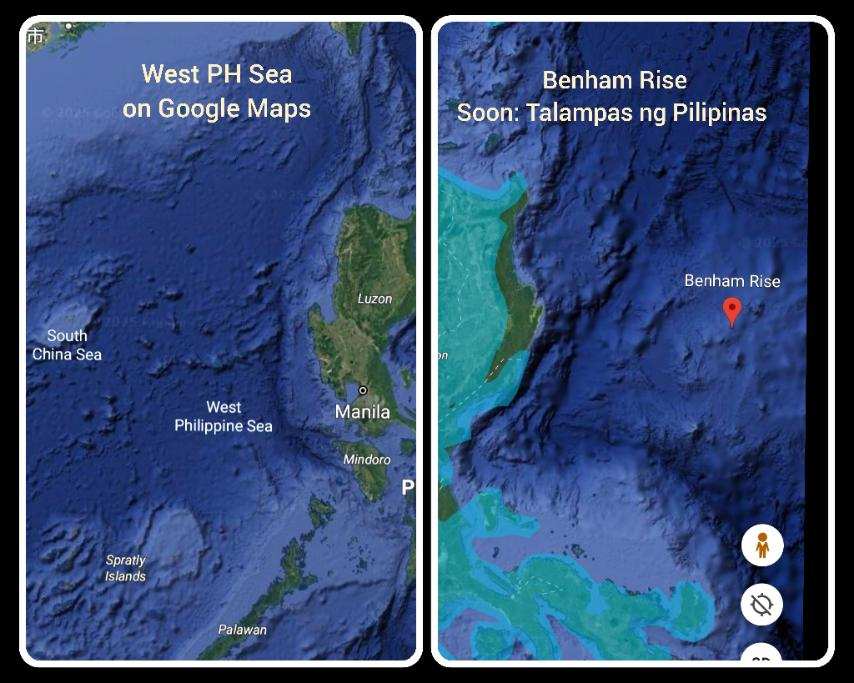WPS inclusion in Google Maps a legacy for Gen Z, Alpha, Beta and beyond—Tolentino
The West Philippine Sea’s inclusion in Google Maps is a “victory for all Filipinos,” Senate Majority Leader Francis Tolentino said.

More than that, Tolentino said this latest development will be considered a legacy for the Gen Zs, the Alphas and Betas and even beyond.
“This is our legacy for the next generation and beyond. I hope to see in my lifetime the energy resources from WPS and Talampas ng Pilipinas being harnessed by Filipinos for Filipinos, and bringing us on the path to industrialization and prosperity,” Tolentino stressed.
Tolentino expressed hope Google Maps will integrate the Talampas next. Currently, the region still appears as Benham Rise on the app.
The WPS, along with the Talampas ng Pilipinas – a resource-rich undersea rise located in Luzon’s eastern seaboard – were defined and enshrined under the Philippine Maritime Zones Law or Republic Act No. 12064.
“Growing global recognition for WPS represents a victory for all Filipinos. It is also an affirmation of the correctness of the Philippines' current policy to assert its sovereign rights in line with international law and multilateralism,” said Tolentino, who was the principal author of the law.
Moreover, the lawmaker said the statements of support that the Philippines has been receiving from several nations, including global leaders like the United States and the European Union, are significant.
The Philippines’ cause is being driven not just by the government’s efforts – but also the active online presence and patriotism of Filipinos, the senator noted.
“The world is taking notice because of our unity and collective efforts as a people. And this is despite the aggressive actions of China to drive away Philippine government ships and fishermen from our very own exclusive economic zone,” he pointed out.
Sen. Joel Villanueva echoed Tolentino’s observation and said that the designation and identification on Google Maps of the West Philippine Sea is a major victory for the country against China’s bullying.
“There is power in labeling; in this case, it clarifies ownership and establishes identity, serving as a global recognition of our rightful ownership of WPS,” Villanueva said.
“Wala naman pong duda na atin ang West Philippine Sea. Naipanalo na po natin ito noong July 12, 2016. Ito po ay mananatiling tiyak at totoo kahit ilang dekada at administrasyon pa ang dumaan (There is no doubt that the West Philippine Sea is ours. We won it on July 12, 2016. This will remain certain and true even after several decades and administrations have passed),” he said.
This milestone, Villanueva said, will also be important in teaching and providing clarity to every Filipino, especially children, “about the territory and sovereignty of our country with the help of digital technology.”
“Katulad ng sinabi po natin noong nakaraang taon, kasama dapat sa aralin ng mga bata ang pag-aaral ng mga yamang tubig ng bansa, pagguhit ng mapa ng Pilipinas at pagtukoy sa mga isla at tubig na kabilang sa ating kapuluan, at ang pagpapahalaga sa Arbitral Ruling at diplomasya (As we said last year, children's lessons should include studying the country's water resources, drawing a map of the Philippines and identifying the islands and waters that belong to our archipelago, and appreciating Arbitral Ruling and diplomacy),” he added.
“If we are to strengthen the narrative of our country on the West Philippine issue, we need to inspire, transform, and educate the younger generation,” Villanueva emphasized.